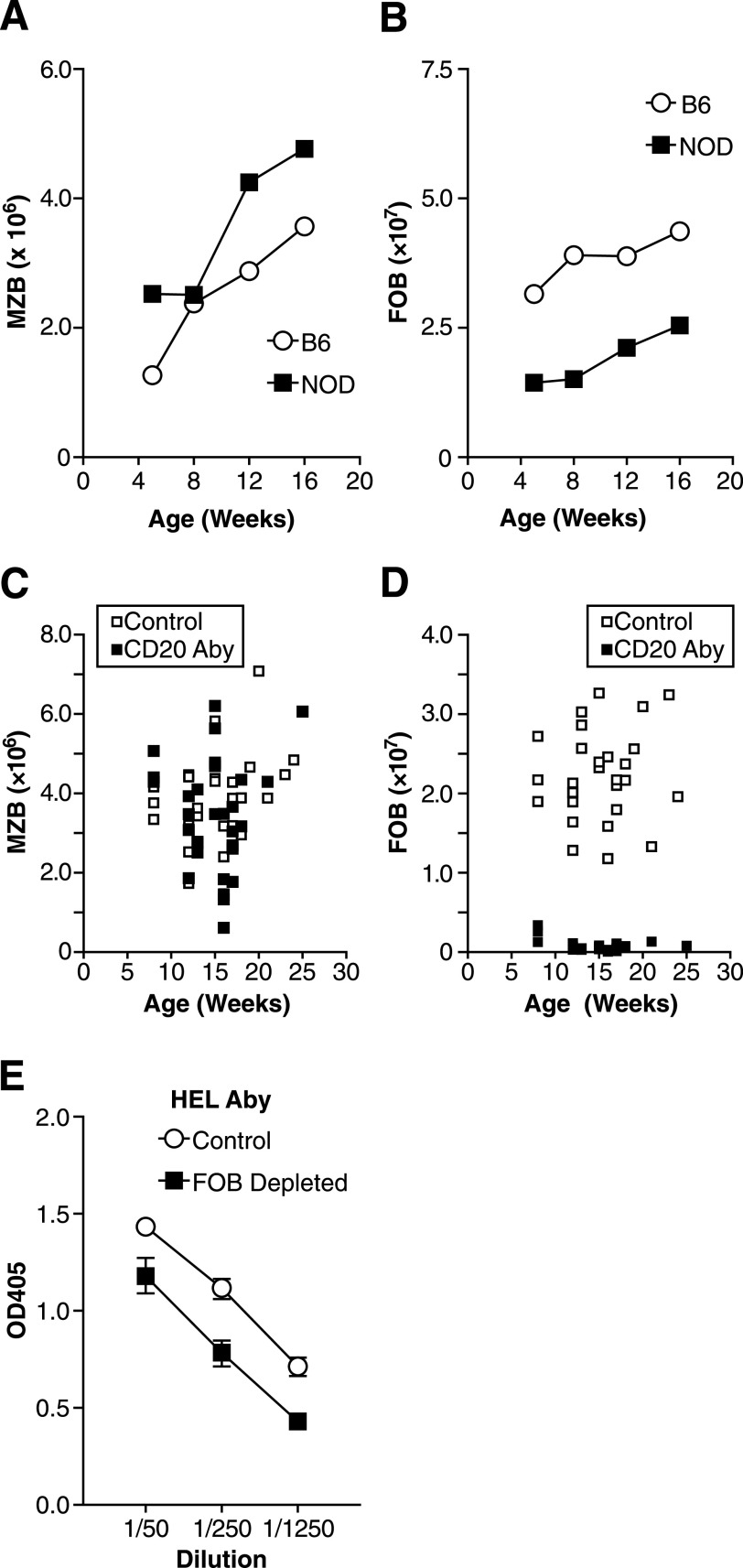FIG. 3.
Selective depletion of the FO subset of mature B cells limits the initiation but does efficiently abrogate already established diabetogenic autoimmune responses in NOD mice. A: Splenic MZ B cells (CD21hi CD23−) undergo a greater age-dependent expansion in NOD than B6 female mice (n = 5 per strain at each time point; P = 0.02 by ANOVA). B: Splenic FO B cells (CD21int CD23hi) undergo a greater age-dependent expansion in B6 than NOD mice (P = 0.001 by ANOVA). C and D: Treatment with the IgG1 isotype of the 18B12 murine CD20-specific antibody deletes splenic FO but not MZ B cells in NOD mice. Treatment at 21-day intervals with the CD20-specific or control antibody was initiated at 5 weeks of age in a cohort of NOD female mice. At the indicated time points, a subset of mice in each group was then assessed for numbers of splenic MZ (C) and FO (D) B cells. E: Antibody responses to exogenous antigens are marginally suppressed in NOD mice selectively depleted of FO B cells. NOD mice were treated at 10 weeks of age with the control or IgG1 CD20-specific antibody (n = 5 per group) and then primed 9 days later with HEL. Serum was collected 11 days after antigen priming and assessed by enzyme-linked immunosorbent assay for relative levels of HEL-specific antibodies. Data are represented as mean OD405 ± SEM at the indicated serum dilutions (control vs. FOB depleted: P = 0.0001 by ANOVA). MZB, MZ B cells; FOB, FO B cells; Aby, antibody.

